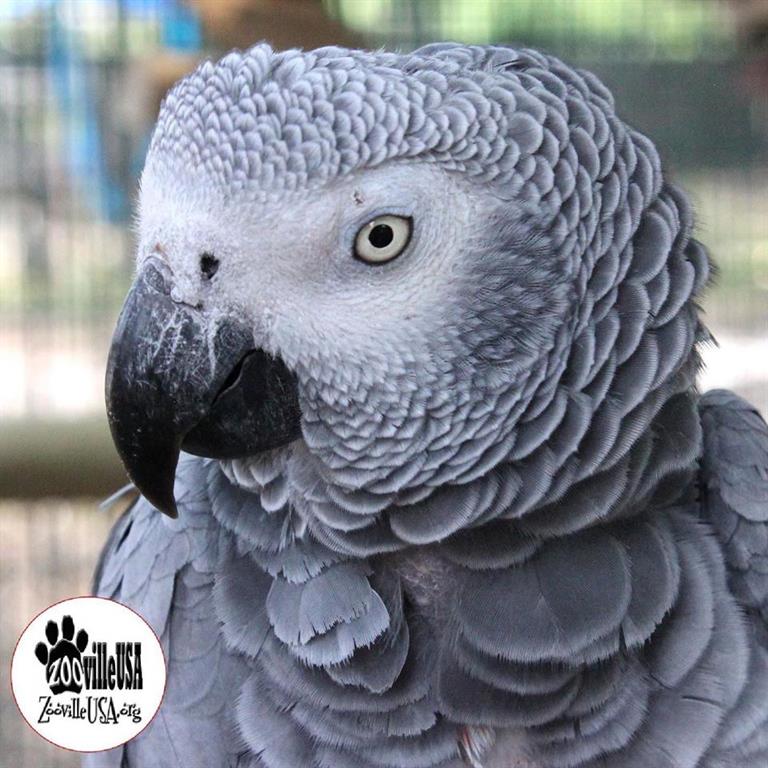AFRICAN GREY PARROT (Psittacus erithacus)

Where can I find African grey parrots in the wild?
The African grey parrot is native only to Africa and can be found from the Bijagos Archipelago of Guinea-Bissau east through the forest belt of West Africa to the Congo Basin, Uganda, and the Kakamega Forest in Southwest Kenya. They live in rain forests, riverine forests, mangroves, and oil palm plantations.
How big are African grey parrots?
The largest of the African parrots, the African Grey (also referred to as "Jocko") stands approximately 13" tall. It received its name from its coloring which is chiefly a sooty grey with a light grey rump and bright red tail. It has a black bill and white mask around yellow eyes. Some Greys have displayed red feathering throughout their body and are referred to as "King Jockos". Its smaller sub-species, the African Grey Timneh, has more maroon colored tail feathers.
What do African grey parrots eat?
They primarily eat seeds, nuts, fruits, and berries. They wander from tree to tree depending on which is in fruit, and have also been known to raid crops such as oil-nut palms and maize. African grey parrots have a hooked beak which is incredibly strong and enables them to crack open nuts.
Do African grey parrots live in groups?
Like most parrots, once they select a mate, they remain monogamous with that mate for life. They communicate through high pitched whistles, screams and growls. They make their nests in cavities in trees and lay their eggs (usually 1 - 4) directly in the wood dust rather than actually building a nest. It is common for African grey parrots to roost together at night and groups of up to 100 parrots have been seen together.
Are African grey parrots endangered?
African grey parrots are classified as endangered by the IUCN Red List with a declining population. Most noted for its talking ability, Grey numbers are greatly declining. Because there is such a great demand for these birds as pets, they are still being captured illegally for the pet trade. For every 1 Grey that survives capture to be sold as a pet, more than 100 have died. Because import of these and other endangered parrots is illegal, they have to be smuggled in. They are crammed into suitcases by the 100's and flown to other countries. To find the 1 or 2 that may have survived is nothing short of genocide. African Greys are successfully bred in captivity and in large numbers, so the need to capture from the wild should be non-existent, unfortunately - it is not. If you are interested in having a parrot for a pet, not just African greys, make sure you know where the bird is coming from and that it was captive bred.